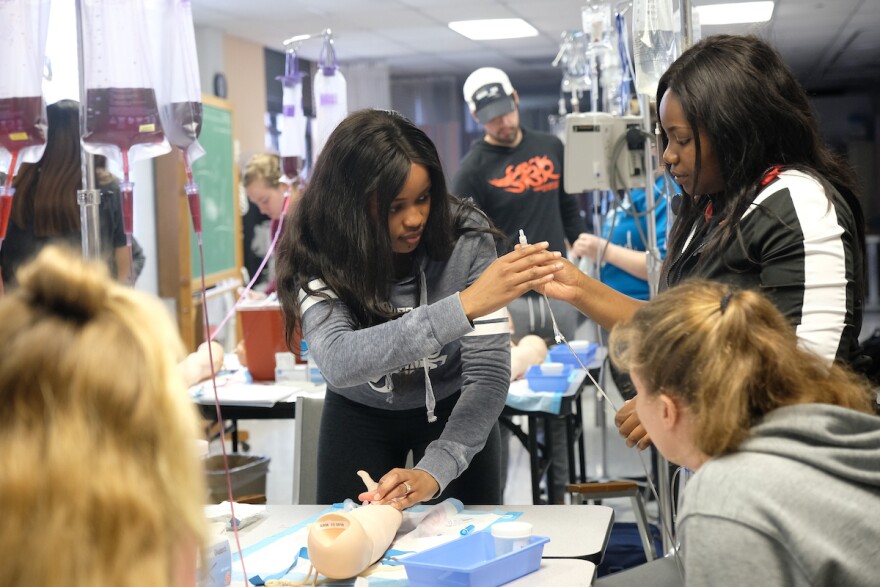The percentage of nursing positions that are vacant at St. Louis-area hospitals has risen sharply since the start of the coronavirus pandemic and presents significant concerns for staff and patient care, according to the Missouri Hospital Association.
The association gathered data from 33 hospitals in the St. Louis area and the Metro East in 2021, and from 35 hospitals the year before.
It found vacancies for registered nurses in the metro area increased from 11.2% in 2020 to 20.3% in 2021, when hospitals ended the year with 3,681 registered nurse vacancies. Hospitals also saw increased turnover.
In Missouri, staff registered nurse vacancies increased to 19.8% in 2021, the highest rate since the hospital association began its report 21 years ago. Missouri has 33,692 nurses working in hospitals but 8,334 vacant nursing positions.
The report notes that nurses were leaving their jobs before the pandemic. But the virus, competitive salaries at agencies and the desire for a different workplace led many to leave their jobs over the past two years. Those departures have posed challenges for nurses who stayed on their jobs
“The turnover affects the culture and the rhythm of an organization, but those vacancies are putting a lot of pressure on the workforce that is currently employed,” said Dave Dillon, the hospital association’s vice president of public and media relations.
“It's also dealing with all of the various things that have happened over the last two years,” Dillon said. “So they're under a lot of stress and they're picking up shifts and or work for those people who we really need but can’t find.”
Jobs for certified respiratory therapists, medical laboratory technicians, licensed practical nurses and surgical technicians have been the most difficult positions for hospitals to fill in the St. Louis area.
The report found that having fewer nursing teachers at universities is contributing to the nursing shortage as some schools don't have enough faculty to accept qualified students. It notes that more than 10,400 nursing students were enrolled at nursing schools across the state in 2020, but nursing schools turned away nearly 1,300 qualified applicants that year.
University of Missouri-St. Louis School of Nursing Dean Roxanne Vandermause said the pandemic has shined a light on staffing woes that have existed across the country for years.
“Retention in nursing has been a problem over time,” Vandermause said. “The pandemic has certainly affected nurses, and it's affected hospitals in ways that may have exacerbated problems that were coming.”
Vandermause said the pandemic, retirements and departures from the field have all contributed to the shortage. She said it’s critical for nursing schools to focus on training nurses and to encourage them to continue their education throughout their careers and teach future nurses.
“We want to start from the ground up, to educate young nurses to look further and to recognize that there's a trajectory, an educational trajectory that is available to them if they choose to take it,” Vandermause said.
Follow Chad on Twitter: @iamcdavis




